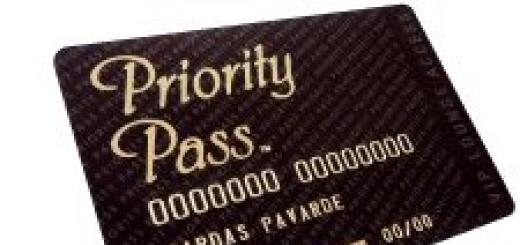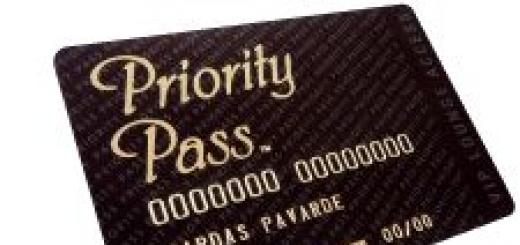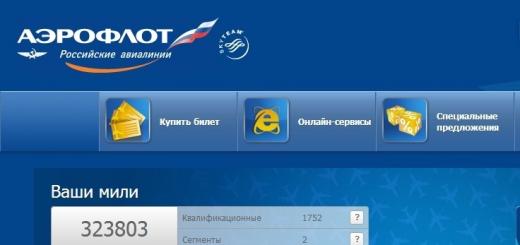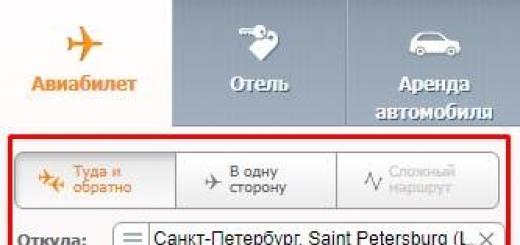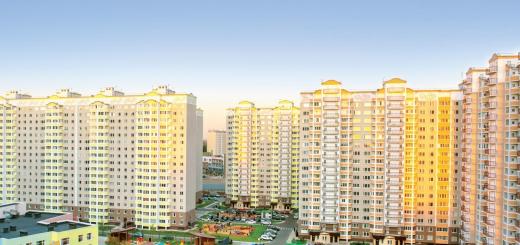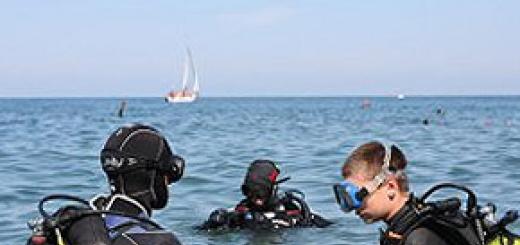
Having received the luggage, we went to the exit, to the waiting room for arriving flights.

Following signs to Arrivals Hall Exit and Civic Aviation Airport Bus, we passed the crowd into the waiting room.

In the waiting room, we saw a sign to the left with the coveted inscription Airport Bus Station. Looking to the left, we saw a small fenced area - a waiting room for buses. There was also a ticket office, in which they explained to us that the bus stop to the border is on the street, tickets must be purchased right at that stop. The exit from the airport building was just a few meters away from us. There was another Bus Station sign above the exit.

We went out into the street and a few steps to the right saw the stop we needed. Here is the photo stop itself. This is the ticket office. Boarding the bus is made to the right of it. The young man standing in front of the cashier turned out to be a very kind, cheerful, English-speaking, native of Hong Kong, who was on his way to his parents' home from Shanghai for the New Year holidays, where he lives and works. He showed us how to get to Hong Kong from bus station where we took the bus from Shenzhen airport.

Goes to the border route 330... The border is at the final stop. The fare is 20 yuan. In general, route 330 is an express from the airport to the railway station. On the way, he makes only one or two stops. We reached the final one in about an hour. There were no traffic jams, since the streets of Shenzhen were also empty due to the Chinese New Year, which was only a few hours away. The final stop is the bus station. There is a railway station just across the street from it. The railway station building supports the border. There he settled down transition to Hong Kong... This crossing point is called Luohu (罗湖 LuoHu)... The 330th, first line (Line 1) goes to the border. Be careful, buy tickets to the final route 330 first line, and when boarding the bus, make sure the conductor goes to the Luohu border.

When we arrived at the bus station, we found that it was completely invisible from the front side. Our bus just drove from the street into a small parking lot in front of some shops, guarded by a security guard at the gate.

When the bus entered the parking lot at the entrance to the bus station, we got out and looked around. There was a railway station just across the road. A Hong Konger friend of ours pointed to a massive building across the road and said that the border crossing point was set up there. The sign with the inscription Luohu Customs ( Luohu customs point).

We left the parking area on the street and turned right at the signboard towards the pedestrian viaduct, which was 200 meters away, and which, above the street and the railway tracks, leads to the building of the railway station.

The railway to Hong Kong is visible from the viaduct. According to our friend, the distant buildings in the background of the photograph are already in Hong Kong.

We walked along a rather long viaduct, without turning anywhere, to the very dead end, where this sign hangs, on which it says “East Station Square” in Chinese above, and below it says “Hong Kong”.

Having gone down the flights of stairs, we continued our way following the signs, which were now in English.

In a minute we were already walking along this long corridor, at the end of which there is an exit from mainland China.

The procedure for crossing the border is absolutely the same as at other points, such as in Manchuria, for example.

We left China, went through Duty Free shops and walked down the corridor towards Hong Kong. The road overlooks the border between the PRC and the Hong Kong Special Administrative Region. On the left in the photo is China, on the right is Hong Kong.

Upon entering Hong Kong, at passport control, we filled out the arrival forms. One copy of the arrival sheet is left for you to present when you leave Hong Kong. We were put in our passports with stamps with the date of arrival and stamps on which it was said that the owners of these passports can stay in Hong Kong for a period of two weeks from the day of arrival. By the way, Hong Kong customs officials speak English, and all graffiti and documents are duplicated in two languages. Russian citizens do not need a visa to Hong Kong... I wonder how the citizens of other CIS countries are doing with this? After passing through Hong Kong customs, we immediately got to the station of one of the. From here you can take the subway to any part of Hong Kong. Hong Kong subway map can be viewed.

P.S. We also flew back to Beijing from Shenzhen. To take a bus to the airport, from the border we returned to the bus station through the familiar pedestrian viaduct. This entrance under the lanterns is the entrance to a rather large bus station. Upon returning to Beijing, we found that tickets for the 330th Express to Shenzhen Airport were not purchased here, but in an adjacent room in the same parking lot.

For tickets for the 330th express, you need to go to this room. The entrance is located a few meters to the left of the entrance to the bus station.

Going inside, we saw the ticket office to the left of the entrance. The ticket also costs RMB 20 per person. This time the cashier explained to us that the 330th express on the way will make a stop at one large hotel, where we will change to another bus of the same route. And so it happened, at some hotel we were asked to change to a nearby bus, the same one, and we took it to the airport at no extra charge.

Express connections between the airport and the railway station in Shenzhen are quite frequent. Here is the bus schedule from the bus station to the airport.

We hope you find our experience useful.
How to get from Hong Kong (airport) to Shenzhen.
Ferry
On a ferryboat: after exiting the plane, ( not getting luggage and not going through passport control !!) you need to follow the Ferry signs to the E2 zone (see the diagram), where you can buy a ferry ticket (Ferry to Shenzhen). A ticket costs between HK $ 150 and HK $ 220 (depending on the day of the week and time of day). When buying a ticket, you should give your baggage receipt to the cashier - the employees will pick up your baggage using it and deliver it to the ferry. Passport control takes place upon arrival in Shenzhen, then you can collect your luggage. Swimming lasts only half an hour. Before buying a ticket, you should decide whether you need to visit Shenzhen Fuyong or Shenzhen Shekou (different districts of Shenzhen).
Bus
By direct bus (coach, coach) from Coach Station in terminal 2. There are bus ticket counters in the second terminal. A ticket costs an average of HK $ 190-250. By bus, the passenger is taken to the Huanggang border crossing: the bus follows from the airport without stops (options are possible) to the Hong Kong border, then all passengers leave the bus with all their luggage, cross the border on their own (on foot) (passport and customs control), after which they turn out to be like would be between the two borders - they have already left Hong Kong, but have not yet entered China. Then the passengers get on their bus again (you need to remember the number and the company, or not let go of the ticket), drive through literally one minute, go out again with all their luggage, and again go through customs and passport control. After passing it, they leave already in Shenzhen. They then board their bus again and proceed to the destination indicated on the ticket. You can buy a ticket only to Huanggang (which is much cheaper - only 100 - 130 HK $), but then, after passing through Chinese customs, the passenger must decide for himself which transport to go on (metro, taxi or bus). The journey takes approximately 1.5 hours.
Regular bus
By bus A43 via the Luohu / Lo Wu border crossing. The bus follows from the Airport to the Fanling stop (that is, you need to go from start to finish). At the final stop, get off and walk about 200 meters to the subway following the signs and take it from Sheung Shui station to Lo Wu. At this station, follow the signs to Shenzhen, which will lead you to the customs and passport control area. Cost: HK $ 30.9 by bus + HK $ 21 by metro. The bus runs from 05:20 to 22:30. The trip takes approximately 1.5 - 2 hours.
Metro
Metro
you need to get with transfers: from the Airport metro station (Airport Express line) -> transfer at Tsing Yi station to the Tung Chung line -> transfer at Lai King station to the Tsuen Wan line -> transfer at Prince Edward station to the Kwun Tong line -> transfer at Kowloon Tong station on the East Rail line -> go to Lo Wu. More clearly, the entire path can be traced on the Hong Kong subway map. Click on the picture on the right to enlarge. The cost of the entire trip is 100.5 HK $.
At Lo Wu Station there will be signs “To Shenzhen” or “To Mainland China” at the exit. You should follow them to the place of customs and passport control. After passing them you will find yourself already in Shenzhen.
Taxi
By taxi to get from the airport to the Lok Ma Chau / Huanggang border crossing (i.e. without leaving Hong Kong) costs about 310 - 350 HK $. However, a person who speaks good English can arrange with a taxi driver to take him for a fixed fee (200 - 250 HK $). This crossing works around the clock, so the "taxi + this border crossing" option is best suited for people arriving on an Aeroflot night flight. There are taxi rates from the airport to different points.
About land border crossings
In total, between Hong Kong and Shenzhen, there are six border crossings
: Lok Ma Chau / Huanggang, Lok Ma Chau / Futian Kou'an, Lo Wu / Luohu, Sha Tau Kok / Shatoujiao, Man Kam To / Wenjindu and Shenzhen Wan. These crossings have double names, as one is Ga Cantonese (from the Hong Kong side) and the other is Mandarin (from mainland China).
The Lok Ma Chau / Huanggang and Lo Wu / Luohu crossings are the most popular, as they are connected by metro lines from both Hong Kong and Shenzhen.
The former British colony is full of history, boasts spectacular harbor views and is a foodie’s haven. From picturesque hiking trails to museums and street markets, Hong Kong has much to offer. Get on the Star Ferry and take in the views of Victoria Harbor, or stretch those muscles with a hike up to Victoria Peak - you'll be rewarded with views over Hong Kong Island, Kowloon, Victoria Harbor, and, if you're lucky , Kowloon's eight mountains. Meander through street markets and bazaars selling everything under the sun, reward yourself with Michelin-starred dim sum and then party hard with the locals in Lan Kwai Fong.
Things to do in Hong Kong
Central
Central (also Central District;) is the central business district of Hong Kong. It is located in Central and Western District, on the north shore of Hong Kong Island, across Victoria Harbor from Tsim Sha Tsui, the southernmost point of Kowloon Peninsula. The area was the heart of Victoria City, although that name is rarely used today.
Tsim sha tsui
Tsim Sha Tsui, often abbreviated as TST, is an urban area in southern Kowloon, Hong Kong. The area is administratively part of the Yau Tsim Mong District. Tsim Sha Tsui East is a piece of land reclaimed from the Hung Hom Bay now east of Tsim Sha Tsui. The area is bounded north by Austin Road and in the east by Hong Chong Road and Cheong Wan Road.
Victoria Peak
Victoria Peak (, or previously) is a mountain in the western half of Hong Kong Island. It is also known as Mount Austin, and locally as The Peak. With an elevation of 552 m, it is the highest mountain on Hong Kong island, ranked 31 in terms of elevation in the Hong Kong Special Administrative Region (Tai Mo Shan is the highest point in the Hong Kong Special Administrative Region with an elevation of 957 m).
Those who often and actively travel in Southeast Asia know that in order to transfer between planes it is sometimes necessary to move from Hong Kong to Shenzhen or Macau or vice versa, and to watch auto races or air shows in Zhuhai, you must first fly to Hong Kong. In this section, we will tell you how to move quickly and comfortably between 5 popular cities in this region: Hong Kong, Macau, Shenzhen, Guangzhou and Zhuhai.
We have shown the general scheme of movement between these cities in the figures.
*******************************************************************************************************************
.jpg)
For starters, the good news for those arriving in Hong Kong is that you can get to any of these cities directly from the airport. Ferry portSkyPier at Hong Kong International Airport (HKIA) provides high-speed ferry services for passengers. SkyPier serves the following nine ports:
- Dongguan(Dongguan Humen)
- Guangzhou(Guangzhou Lianhuashan)
- Guangzhou(Guangzhou Nansha)
- Macau(Maritime Ferry Terminal)
- Macau(Taipa)
- Shenzhen(Shenzhen Fuyong)
- Shenzhen(Shenzhen Shekou)
- Zhongshan
- Zhuhai(Zhuhai Jiuzhou)
But first things first
How to get to Macau from Hong Kong
Ferry
The most popular and enjoyable way to get from Hong Kong to Macau is by taking a ferry, either at the airport or in Hong Kong itself. Ferry timetables and ticket prices from Hong Kong Airport to Macau (Taipa) can be viewed, and at Macau Maritime Ferry Terminal -.
Ferries from Hong Kong to Macau depart from several berths, namely China Ferry Terminal at Tsim Sha Tsui (First Ferry), Central on Hong Kong Island (Turbojet) and Tuen Mun Terminal in New Territories (Turbojet). Ferries from Hong Kong to Zhenzhen Airport also depart from the latter. In addition, there are ferries to the Taipa Ferry Terminal, which can be reached directly from the Macau Casino.
Departure frequency
From Central: Every 15 minutes from 07:00 to 24:00, plus 7 additional flights at night.
From Tsim Sha Tsui: Every 30 min from 07:00 to 24:00.
From Tuen Mun: 4 ferries per day
Travel time
60-75 min from Central and Tsim Sha Tsui, 40-50 min from Tuen Mun.
Price
From Central: from HKD 124 (economy class), from HKD 176 (at night).
From TST: from HKD 133 (economy class).
From Tuen Mun: from 164 (economy class).
On weekends and holidays, Hong Kong-Macau ferry prices are higher.
Traveling in first class on the Hong Kong-Macau ferry will not be much more expensive, but much more pleasant - the first class is located on the second deck with good visibility, and the economy class, which is usually used by the local population for constant transfers, is on the first deck, where the engine room ...
Where to buy tickets
Tickets are sold at the ticket offices of the terminals 30 minutes before departure, namely:
33 Canton Road, Tsim Sha Tsui, Kowloon.
Tuen Mun Promenade, Tuen Mun
Hong Kong-Macau ferries are frequent, so buying tickets in advance is not worth it, unless your trip is tied to the plane. However, evening and night flights from Macau to Hong Kong are often crowded, so it is recommended that you buy a return ticket as soon as you arrive in Macau.
you also can buy ferry tickets from Hong Kong to Macau in advance directly from us, eliminating the need to stand in line and the risk of being left without a ticket during peak days and hours when tickets are sorted out like hot cakes.
If your destination is Macau casinos such as the Venetian and City of Dreams routes, you can take a ferry to Taipa Terminal in Macau. From it in just 10 minutes by bus you will get to the most famous casinos of Cotai.
Bus from Hong Kong to Macau
Another way to travel between Hong Kong and Macau (via Zhuhai) is by taking a bus across the newly opened Hong Kong-Zhuhai-Macao Bridge (HZMB), the longest (55 km) sea bridge in the world. !
Route: Hong Kong Airport - Macau (Outer Harbor Ferry Terminal) - Zhuhai (Gongbei Port), travel time - about 1 hour.
Price:
65 HKD during the day and 70 at night (50% discount for children and people over 65).
Schedule:
1. Timetable in Hong Kong to the terminal -
2. The interval of movement is 5-10 minutes, around the clock.
Other bus options Hong Kong - Macau.
Golden Bus is the cheapest way to cross the bridge. One drawback is there are not many routes that go directly from the city to the Hong Kong port, except for the new B buses (B4 to and from Hong Kong airport, B5 to and from Tung Chung and B6 to and from Sunny Bay Station). Some airport buses also pass through the Hong Kong port (see list).
Macau Port HZMB has two buses (101X and 102X, both cost 6MOP) that take you directly to the city. There is a free shuttle to the Cotai or Macau ferry pier, from where you can continue your journey with the free shuttle bus from major hotels.
Zhuhai Port has 8 public bus routes that take passengers to the city.
Movement time: around the clock
Price: You can buy a ticket on the bus, the cost is 65 HKD, from midnight to 5:59 am - 70 HKD.
Baggage allowance: one bag no more than 75x50x40 cm and no more than 20 kg.
One bus- the route between Yau Ma Tei (505 Canton Road) in Hong Kong and Macau, stopping near the Macau Sands Macao, The Venetian Macao and The Parisian Macao hotels.
Tickets can be bought online or at the box office at 535 Canton Road or at three hotels when in Macau. Cost 160 HKD and 180 HKD after 18:00.
Opening Hours: The last One Bus from Hong Kong departs at 6pm.
Hong Kong-Macau Express- departs from the Cross-Boundary Coach Terminal at Elements (shopping mall at Kowloon Subway Station). He stops at Prince Edward (ChinaLink, Shop A, 695 Shanghai Street) before heading to Macau.
Although this express line covers more hotels (Grand Lisboa, MGM Macau, Sands, MGM Cotai, Venetian Macao, Galaxy Macau and StarWorld Hotel), the bus actually only stops at three of the listed hotels.
Tickets can be bought at each of the stops.
The cost is HKD 160, excluding public holidays when the cost is HKD 180.
Opening hours: from 8 am to 10 pm.
IMPORTANT: for citizens of the Russian Federation it is necessary IN ADVANCE get a Chinese visa, because Zhuhai is not one of the cities where you can put a visa stamp at the border.
How to get from Hong Kong to Guangzhou
If you need to move to Guangzhou as soon as you arrive at Hong Kong airport, the most convenient option is to take a direct ferry at SkyPier, which will take you to Guangzhou Lianhuashan or Guangzhou Nansha. Its schedule and prices can be found. At the same time, you do not need to go through Hong Kong immigration control or collect your luggage. After arriving and exiting the gate, follow signs for Transfers Area E2 (transfer area E2) or Ferries to Mainland (ferries to China). There are counters in Transfers Area E2 where you can buy ferry tickets (ferry company CKS). When buying a ticket, you need to give your luggage tags to the company employees. They will collect your luggage and transfer it to the ferry.
But from Hong Kong you can get to Guangzhou by train. All trains from Hong Kong to Guangzhou depart from Hung Hom Station in Kowloon and arrive at Guangzhou East Station in Guangzhou. There are about a dozen trains throughout the day that make this trip in two hours, and the timetable can be found on the official website or at the train station. Tickets can also be purchased online or at the train station. However, there is no need to buy tickets in advance - there are always enough of them. It is important to note that in Hong Kong, ticket sales end 20 minutes prior to departure, while in Guangzhou it closes 6 hours, and the boarding closes approximately 15-15 minutes prior to departure. So, if you already have tickets, it is better to arrive at check-in at least forty-five minutes before departure in order to go through customs and immigration control without haste. Travel time is approximately 2 hours, cost is HKD 210.
How to get from Hong Kong to Shenzhen
Direct ferry from Hong Kong Airport to Shenzhen can be reached by direct ferry from SkyPier - ferries depart from Hong Kong Airport to Shenzhen Shekou and Shenzhen Fuyong (if you need to Shenzhen Bao'an Airport).
If you want to get to Shenzhen by ferry, you don't have to go through Hong Kong immigration or collect your luggage. After arriving and exiting the gate, follow signs for Transfers Area E2 (transfer area E2) or Ferries to Mainland (ferries to China). There are counters in Transfers Area E2 where you can buy ferry tickets (ferry company CKS). When buying a ticket, you need to give your luggage tags to the company employees. They will collect your luggage and transfer it to the ferry. Travel to Shekou costs HKD 220, to Fuyong - HKD 295.
The journey duration is about 30 minutes to Shekou and 40 minutes to Fuyong. Arriving in Shenzhen and receiving your things, you need to take a taxi to your hotel or other destination.
Schedule and ticket prices can be viewed.
An even more convenient option is individual transport. Here you can order a transfer from Hong Kong airport to Shenzhen and back from 230 USD (per car, 4-5 people) one way, depending on the place of arrival.
How to get from Hong Kong airport to Zhuhai
If you arrived at Hong Kong airport and need to continue to Zhuhai, there are several options:
Take the Airport Express Subway to Kowloon Station (HK $ 90), then take the free K2 shuttle bus to the China-Hong Kong Ferry Terminal, where you can take the ferry to Zhuhai.
Take the ferry at Skypier to Macau, then cross the border to Zhuhai via the Gongbei border crossing. Immigration procedures can be completed in Hong Kong. The ferry ride takes about 50 minutes and departs every hour.
There is also a ferry (twice a day) directly from Hong Kong airport to Jiuzhou port in Zhuhai. Timetables and ticket prices can be found.
How to get from Macau to Shenzhen
To get from Macau to Shenzhen and vice versa, you can take a ferry. Shekou Port of Shenzhen has ferry connections with terminals in Macau (Macau Ferry Terminal) and Taipa Peninsula (Taipa Temporary Ferry). The journey takes about an hour.
Departure from Seko (Turbo-Jet): 8:15, 8:45, 10:30, 11:30, 13:30, 14:30, 15:30, 16:45, 18:30, 19:30
Departure from Macau: 9:45, 10:15, 12:00, 13:15, 15:00, 16:00, 17:00, 18:00, 20:00, 20:45
Cost: CNY 270 (first class), CNY 170 (tourist class), CNY 100 (child first class), CNY CNY75 (child)
Departure from Shekou to Taipa Ferry Terminal: 9:30 am, 12:15 pm, 5:30 pm
Departure from Taipa: 11:00, 14:00, 19:00
Cost: CNY 170 (tourist class), CNY 75 (children)
There is also a connection between the Fu Yong Ferry Terminal of Shenzhen Airport and the Macau Ferry Terminal - Turbo-Jet ferries. Timetable and ticket prices can be found
How to get from Guangzhou to Zhuhai
There are two ways to get from Guangzhou to Zhuhai and vice versa: by bus or train.
A train
The train is a cheaper and faster option than the bus.
There are 24 pairs of trains running between Guangzhou South Railway Station and Zhuhai North Railway Station every day. The duration of the trip is about 1 hour. Cost: CNY 44 (first class) and 36 yuan (second class).
Bus
You can also travel by bus between Zhuhai and Guangzhou. The duration of the trip is about 2 hours. Cost: CNY 65.
You can take a bus from Guangzhou to Zhuhai at almost every bus station in Guangzhou: Provincial Bus Station, Fangcun Bus Station, Guangzhou Passenger Transport Station and Tianhe Bus Station, etc. Remember, if you want to travel to Macau, you need to arrive at Gongbei Port. The two closest bus stations are Gongbei Bus Station and Xiangzhou Bus Station.
How to get from Macau to Zhuhai
You can travel between Macau and Zhuhai by bus that goes through one of two checkpoints: the Barrier Gate at the border between Macau and Zhuhai and the COTAI border post at the end of the Lotus Bridge on Taipa Island.
The Barrier Gate in northern Macau is the main gateway to Zhuhai. Gongbei Station, 9 km from the center of Zhuhai, is a Chinese checkpoint and is a few hundred meters from the Barrier Gate.
Working hours: from 7:00 to 24:00.
There are buses between Macau and Guangzhou that pass the Barrier Gate and the Gongbei border. The place to catch these buses is at The Kee Kwan Bus Stop, near the Master Hotel in Macau. For travelers who have not applied for a Chinese visa, the alternative is to first exit Macau Gate and accept immigration formalities at the Gongbei border, and then catch buses at Gongbei in Guangzhou.
The COTAI checkpoint on the dam between Taipa and Koloan is the second route to mainland China. Its working hours: from 8:00 to 20:00.
After crossing the checkpoint on the Macau side, take a bus across the bridge to the Chinese side (¥ 3) and then from the Hengqin side of the border take bus 14 to Xiangzhou, or take the Kee Kwan minibus in Wanzai or Gongbei (¥ 5) near Zhuhai.
There is also a ferry service between Macau and Zhuhai, operating from Inner Harbor "s Pier No. 14 in Macau to Wanzai Pier on the Zhuhai side. Departures daily approximately every hour from 8am to 4pm.
How to get from Macau airport to Zhuhai
From Macau International Airport, the best way to get to Zhuhai is through the service Express Link, bypassing immigration and customs control. To do this, after getting off the plane, instead of going to the immigration control counters, look for the Express Link (China) signs and follow them. They will lead you to the security checkpoint where you must grab your Express Link card and then head upstairs to the Departures Hall. Walk to the ticket office at Gate 8, present your card and buy a bus ticket to the Gongbei border (past Macau, on the Zhuhai side). The cost is ¥ 52 and the journey takes 15 minutes. Bus departure times: 11:00, 11:30, 12:00, 12:30, 13:00, 14: 45, 17:00, 17:30, 18:00. If you need to take your luggage, it is recommended that you affix blue tags to them during the check-in procedure. Upon arrival, you must show your luggage tags at the bus ticket counter and collect your bags from the luggage compartment of the bus.

